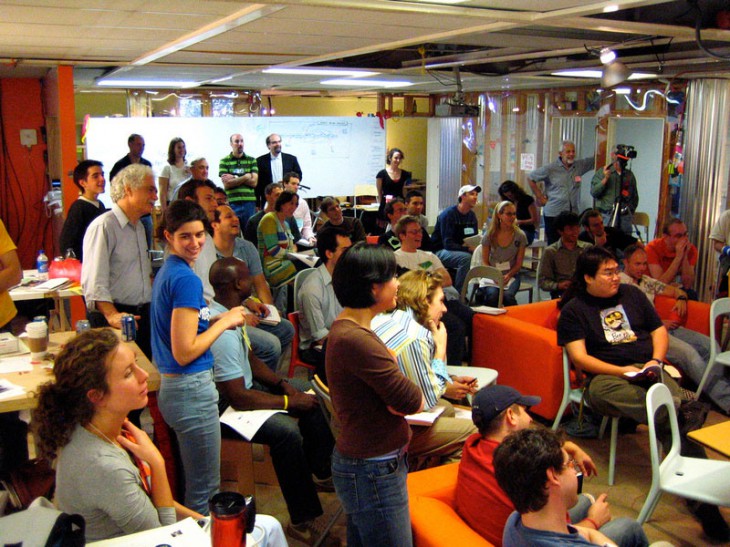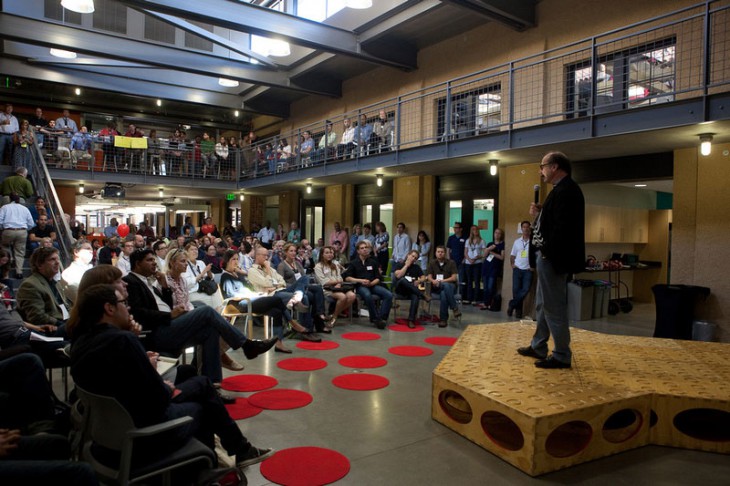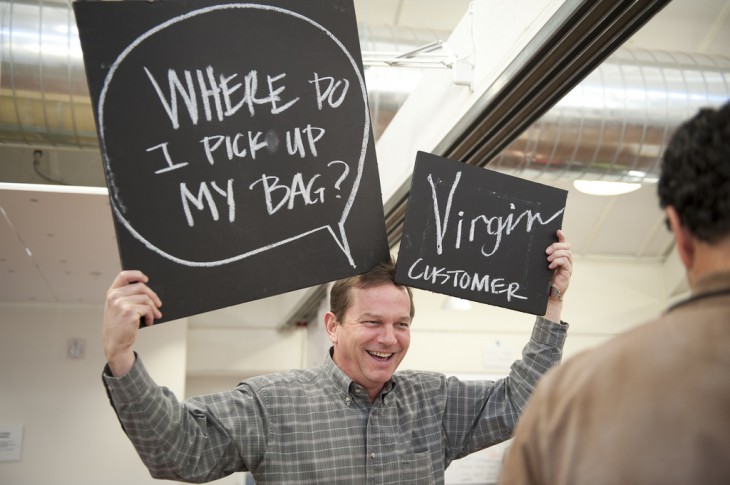We believe everyone is a student of innovation, and our open-enrollment programs are open to applicants from startups, Fortune 500 companies, non-profits and the public sector. In our workshops, executives engage in hands-on, real-world projects to learn the d.school’s human-centered, prototype-driven approach to innovation.
Creative confidence is built through doing, and executives in our programs roll up their sleeves and get into the field. They develop deep insights about the people they’re serving, and turn them into a powerful engine for innovation. Participants plow through a complete design cycle, leveraging low-resolution prototyping and high-frequency iteration to get to unexpected, big ideas. Embedded faculty coaches guide executives through each stage of the innovation process, and help them adapt the process to their own work.
It is of utmost importance to us that participants implement new behaviors of innovation into their work. In fact we expect that’s why people come to our workshops. The program isn’t about passive knowledge acquisition; it is about actively transforming behavior. During the workshop, each participant will create an action plan to do upon returning to work, to jump start an impactful and lasting innovation practice. Participants are expected to stay engaged post-program and complete these action plans. As direct inspiration and illustration in the workshop, we also highlight impactful post-program work of past participants through examples and in-person discussions.
Open-Enrollment
The d.school offers 4 open-enrollment programs each year, in March, July, September, and November. Individuals and small teams are invited to apply.
Success Stories
Bonny Simi attended several d.school courses in 2006 and 2007. Back at Jet Blue as the director of airport planning, she realized she could use design thinking to help untangle one of its thorniest challenges. JetBlue, which had built a stellar reputation for innovation and excellence in customer service, was under fire. A series of storms had stranded passengers on the tarmac for as long as 11 hours. The incidents quickly became a high-profile media disaster. Consultants were called, reports were made, but the glitches that caused the delays still hadn’t been fixed, even after a year of trying.
Bonny went home from the d.school with an idea for a new approach to the problem, and an inexpensive way to fix it. She gathered pilots, flight attendants, schedulers, baggage handlers and customer service agents who were so eager to dig into the problem that they volunteered on their own time. They used need-finding and low-resolution prototyping techniques to diagnose specific problems within the extremely complex system of scheduling flights, crews and passengers.
“I wouldn’t have had the idea to approach the problem in this way if I hadn’t been to the d.school,” Simi said. “You realize that you aren’t going to solve the problem sitting in an office, you need to get out and talk to the people who are actually dealing with it, whether that’s your customers or your front-line employees.”
The root of the problem was that employees with one function didn’t have enough information about the needs of other groups they interacted with. Bonny’s team of front-line employees identified more than 100 specific pain points in the overall operations flow, and what needed to be changed. Some of these issues required only small changes to make a big difference; for example, two employee groups were using different formatting on the same spreadsheet, which had led to the wrong flights being canceled in a storm.
The results of the project were dramatic. In 2007, before the group began working on streamlining operations, a six-hour snowstorm in New York disrupted Jet-Blue’s operations for over a week. After utilizing the design thinking methodology to overhaul the operation, the airline took only a day to recover from a full 24 hour shut down of the busy JFK airport.
“A lot of the d.school’s techniques sound fairly simple, but they’re incredibly powerful when you apply them,” says Simi, who is now Director of Customer Experience and Analysis. “You just have to start.”




